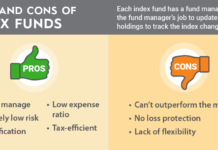Whenever an investing conversation occurs, your portfolio manager or financial advisor will probably mention the words “risk profile.” Even in companies, investors are always talking about the risk profile of the companies they are interested in. So, what is a risk profile?
What’s a Risk Profile
A risk profile is an assessment of an individual’s ability and willingness to take the risk. For organizations, a risk profile refers to the threats that the company is exposed to.
Portfolio managers and financial advisors use your risk profile to determine assets allocation in your investment portfolio. With your risk profile, one can understand your risk tolerance and aversion and match that to assets with the associated risk rate. Risk aversion is one’s willingness to take a risk.
For example, you might be looking for higher returns, no matter the risk. This shows you have a high-risk tolerance level compared to an investor who wants to preserve their capital rather than take an opportunity with higher returns. For such an investor, with a low willingness to take on risk, they are risk-averse. Individuals willing to take on risks for possible high returns, no matter the market volatility, are risk-seekers.
As an investor, you can evaluate your ability to take risks by reviewing your assets and liabilities. If you have more assets than liabilities, you have a high capacity to take on risks. Conversely, individuals with more liabilities and few assets have a low ability to take on risks. If, for example, you have a well-funded emergency fund, retirement savings account, insurance coverage plus other investment and savings accounts with no personal loans or a mortgage, it shows you have a high ability to take on risks.
However, it’s good to note that sometimes one’s ability and willingness to take risks don’t always match. Just because one has high assets and low liabilities doesn’t mean they can take risks. They could probably be conservative in their investment style and have a low willingness to take on risks. For example, the above individual could be having a low willingness to take risks, but their portfolio shows they have a high ability to take risks. This will ultimately affect the process of constructing the investment portfolio.
What to Consider
When creating a risk profile, investors are mostly required to fill a questionnaire, and the total score helps determine their risk profile. Some of the questions include age, income level, the comfort level of their investment, and any significant life changes. Apart from these, one might also be required to answer how they can handle any potential losses.
The more truthful you are in your answers, the better your financial advisor or portfolio manager is in a position to create a portfolio that meets your ability and willingness to take risks and your investment goals.
The 3 Types of Risk Profiles
Aggressive Risk Profile
An aggressive risk profile indicates that the investor is willing to take high risks for the highest possible returns. Young investors are sometimes more aggressive thanks to their long time horizon, allowing them to take the market volatility. Most aggressive investors have experience and understand how the market and economy work and are willing to invest in start-ups to promise higher returns.
Moderate Risk Profile
An investor with a moderate risk profile has a medium willingness and ability to take risks. In short, they do not want to take too much risk but are still looking to earn a return from their investments. If this is your risk profile, you can choose a balanced portfolio with both stocks and debt instruments.
Conservative Risk Profile
Investors with a conservative risk profile gave low ability and willingness to take risks. These investors look for investment assets with low volatility and a small return. If you are a conservative investor, your investment portfolio will mostly include debt instruments.
The bottom line is that your investment portfolio should align with your ability and willingness to take risks and your financial goals. Even if you have a portfolio manager, ensure that you are comfortable with whatever assets they invest in and don’t make you lose sleep worrying whether you lost your capital and returns.











